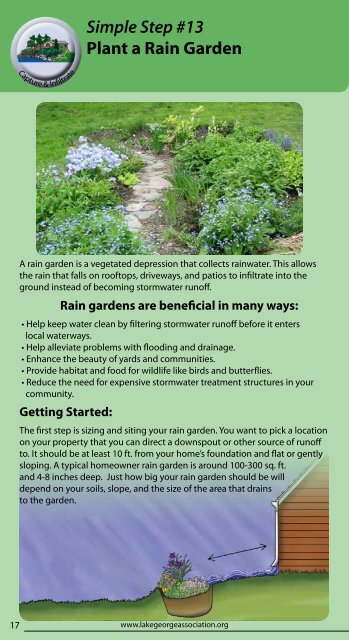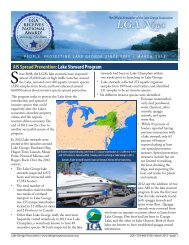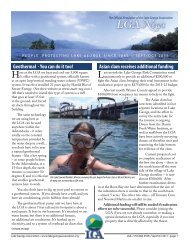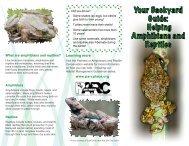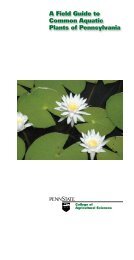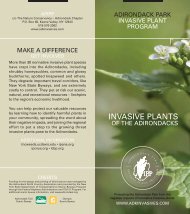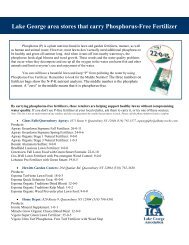"A Homeowner's Guide to Lake-Friendly Living". - Lake George ...
"A Homeowner's Guide to Lake-Friendly Living". - Lake George ...
"A Homeowner's Guide to Lake-Friendly Living". - Lake George ...
Create successful ePaper yourself
Turn your PDF publications into a flip-book with our unique Google optimized e-Paper software.
Simple Step #13<br />
Plant a Rain Garden<br />
Capture & Infiiltrate<br />
A rain garden is a vegetated depression that collects rainwater. This allows<br />
the rain that falls on roof<strong>to</strong>ps, driveways, and patios <strong>to</strong> infiltrate in<strong>to</strong> the<br />
ground instead of becoming s<strong>to</strong>rmwater runoff.<br />
Rain gardens are beneficial in many ways:<br />
• Help keep water clean by filtering s<strong>to</strong>rmwater runoff before it enters<br />
local waterways.<br />
• Help alleviate problems with flooding and drainage.<br />
• Enhance the beauty of yards and communities.<br />
• Provide habitat and food for wildlife like birds and butterflies.<br />
• Reduce the need for expensive s<strong>to</strong>rmwater treatment structures in your<br />
community.<br />
Getting Started:<br />
The first step is sizing and siting your rain garden. You want <strong>to</strong> pick a location<br />
on your property that you can direct a downspout or other source of runoff<br />
<strong>to</strong>. It should be at least 10 ft. from your home’s foundation and flat or gently<br />
sloping. A typical homeowner rain garden is around 100-300 sq. ft.<br />
and 4-8 inches deep. Just how big your rain garden should be will<br />
depend on your soils, slope, and the size of the area that drains<br />
<strong>to</strong> the garden.<br />
17 www.lakegeorgeassociation.org


